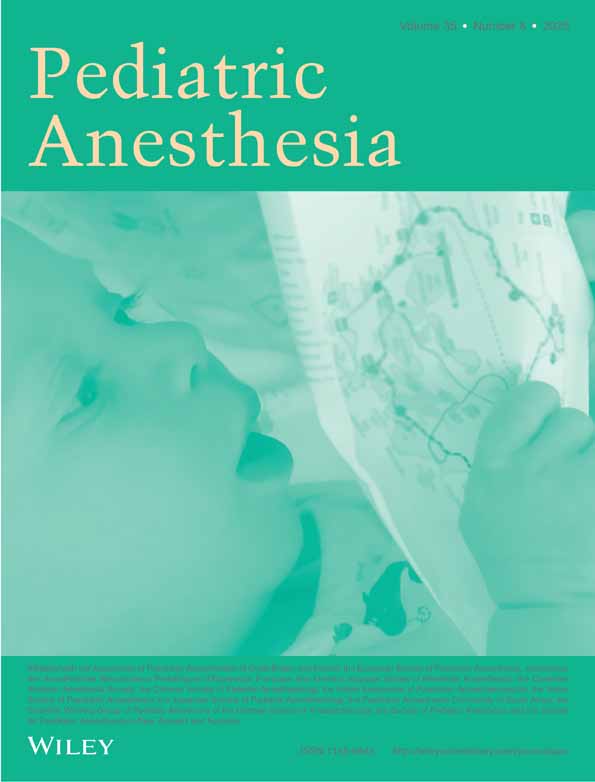Clear Liquid Fasting Guidelines for Pediatric Patients: A Survey of the Society for Pediatric Anesthesia
Funding: The authors received no specific funding for this work.
ABSTRACT
Introduction
Recently, several international anesthesia societies have updated their guidelines by shortening the NPO clear liquid time from 2 to 1 h in children. When the American Society of Anesthesiologists (ASA) released their interim update to the preoperative fasting guidelines, they maintained the 2-h clear liquid fasting recommendation, while advising the use of clinical judgment for cases involving PO intake within 2 h. Given international support for decreased NPO times, we aimed to evaluate the current practice and opinions of the Society for Pediatric Anesthesia (SPA) members regarding clear liquid NPO times.
Methods
A 17-question survey was developed by members of Children's Mercy Kansas City Department of Anesthesiology and submitted to the SPA Research Committee for review. After approval, a survey link and QR code were distributed to all SPA members.
Results
A total of 430 surveys (9.85%) were completed. Seventy-three percent indicated that their department follows a 2-h NPO policy for clear liquids, while 24% reported a 1-h policy. Overall, 71% of respondents felt that 1-h is the ideal NPO time for clear liquids. Of the respondents whose department follows a 2-h policy, 86% believe their NPO policy would be shortened if ASA guidelines were updated to 1-h. Forty-nine percent of respondents reported that NPO instructions to patients are congruent with departmental policies, while 33% reported that NPO instructions differ from departmental NPO policies.
Discussion
The results demonstrate that although only a small number of respondents practice a 1-h policy, most respondents believe that a 1-h policy is ideal. This discrepancy is potentially due to adherence to ASA practice guidelines/recommendations, as 86% of respondents who have an NPO policy of 2 or more hours indicated that their departments would switch to 1-h if the ASA were to revise their guideline.
Conflicts of Interest
The authors declare no conflicts of interest.
Open Research
Data Availability Statement
The data that support the findings of this study are available from the corresponding author upon reasonable request.




